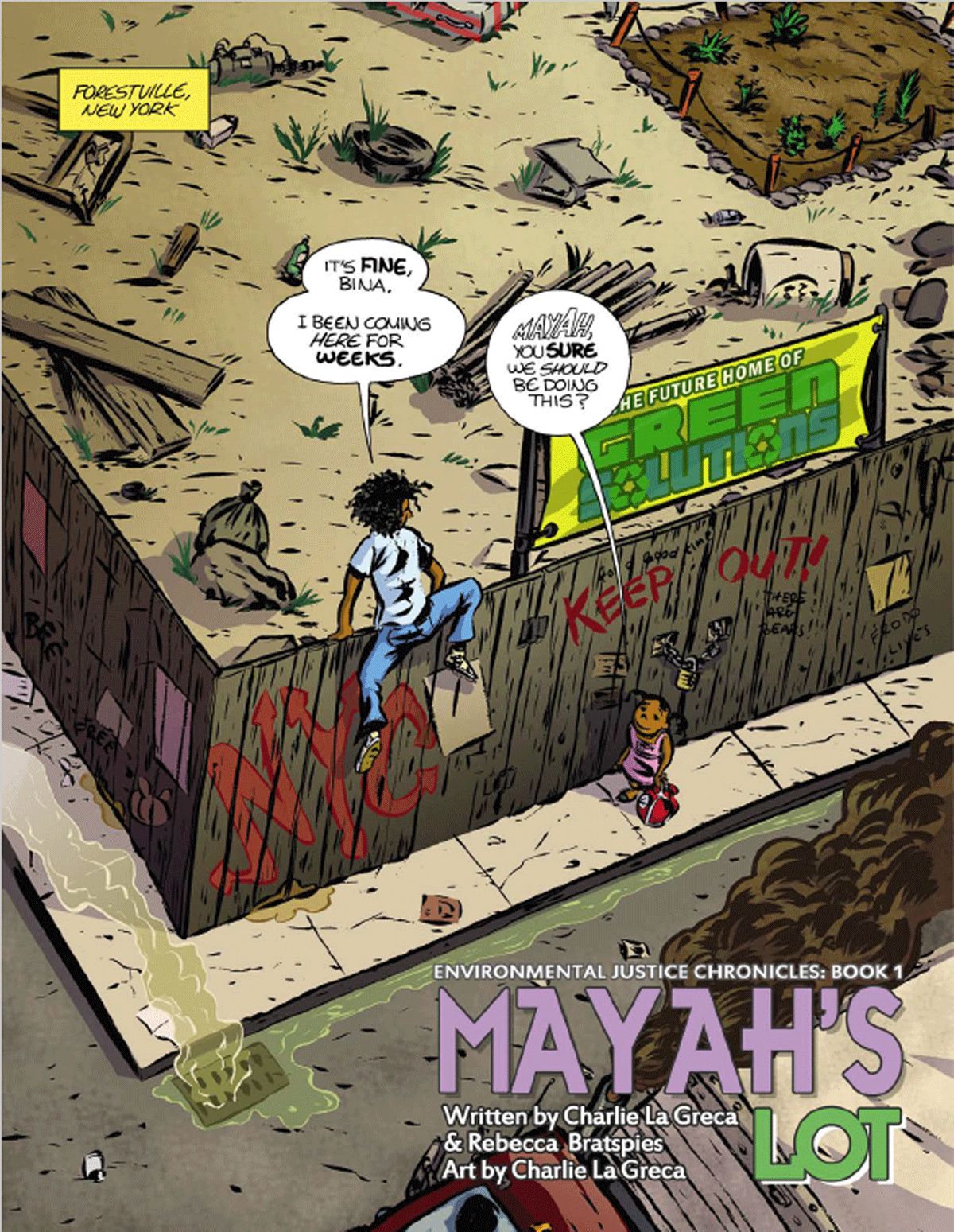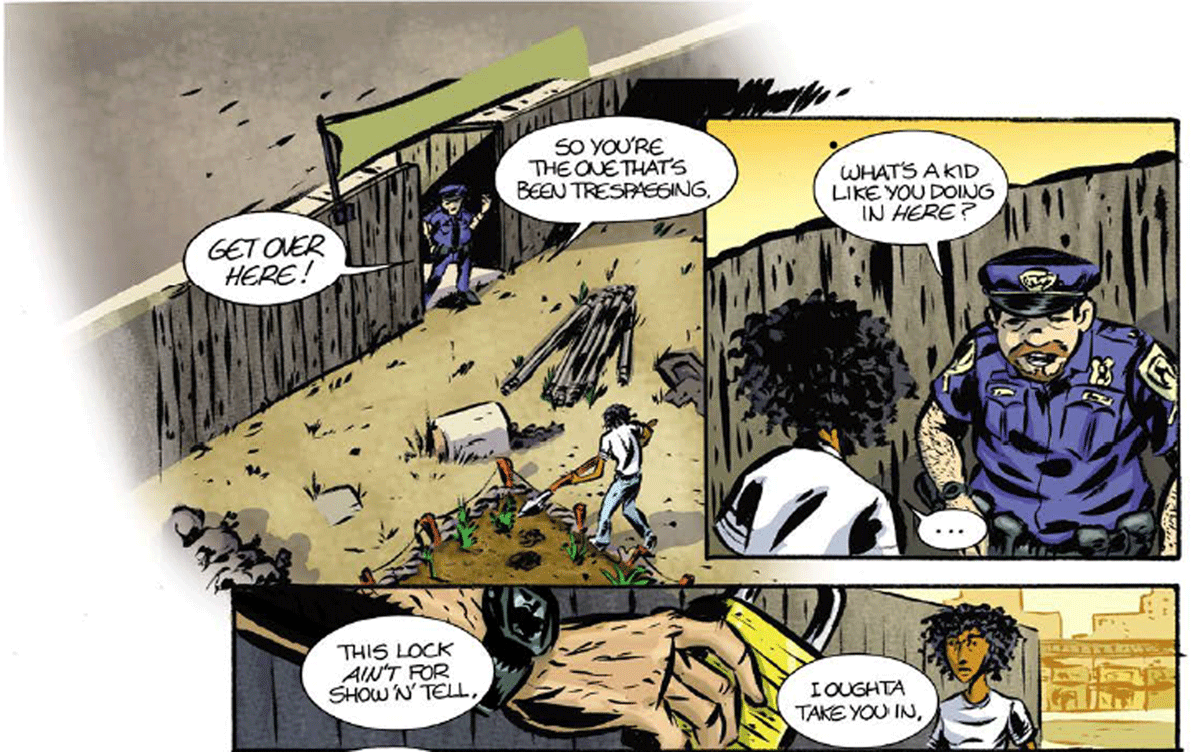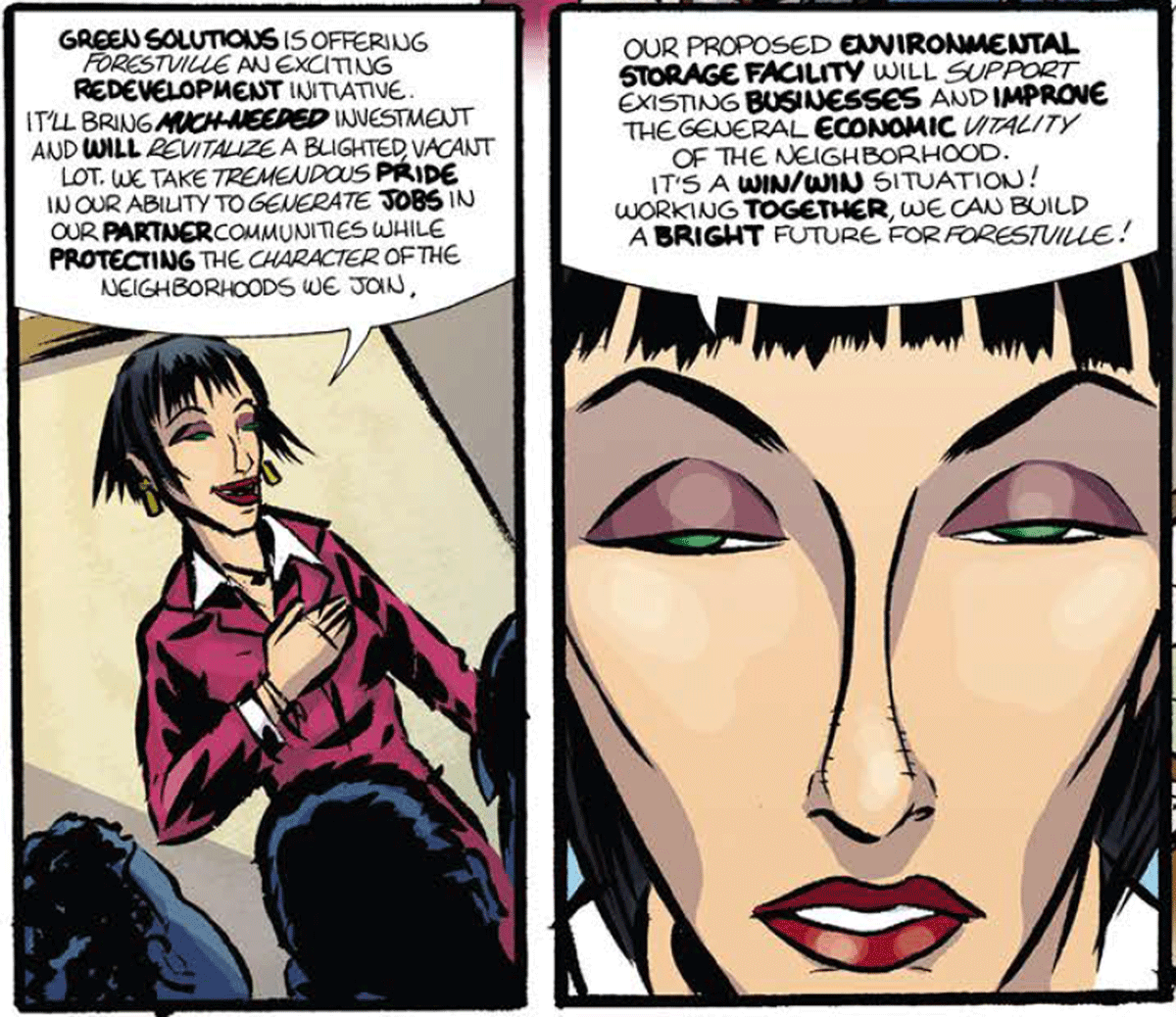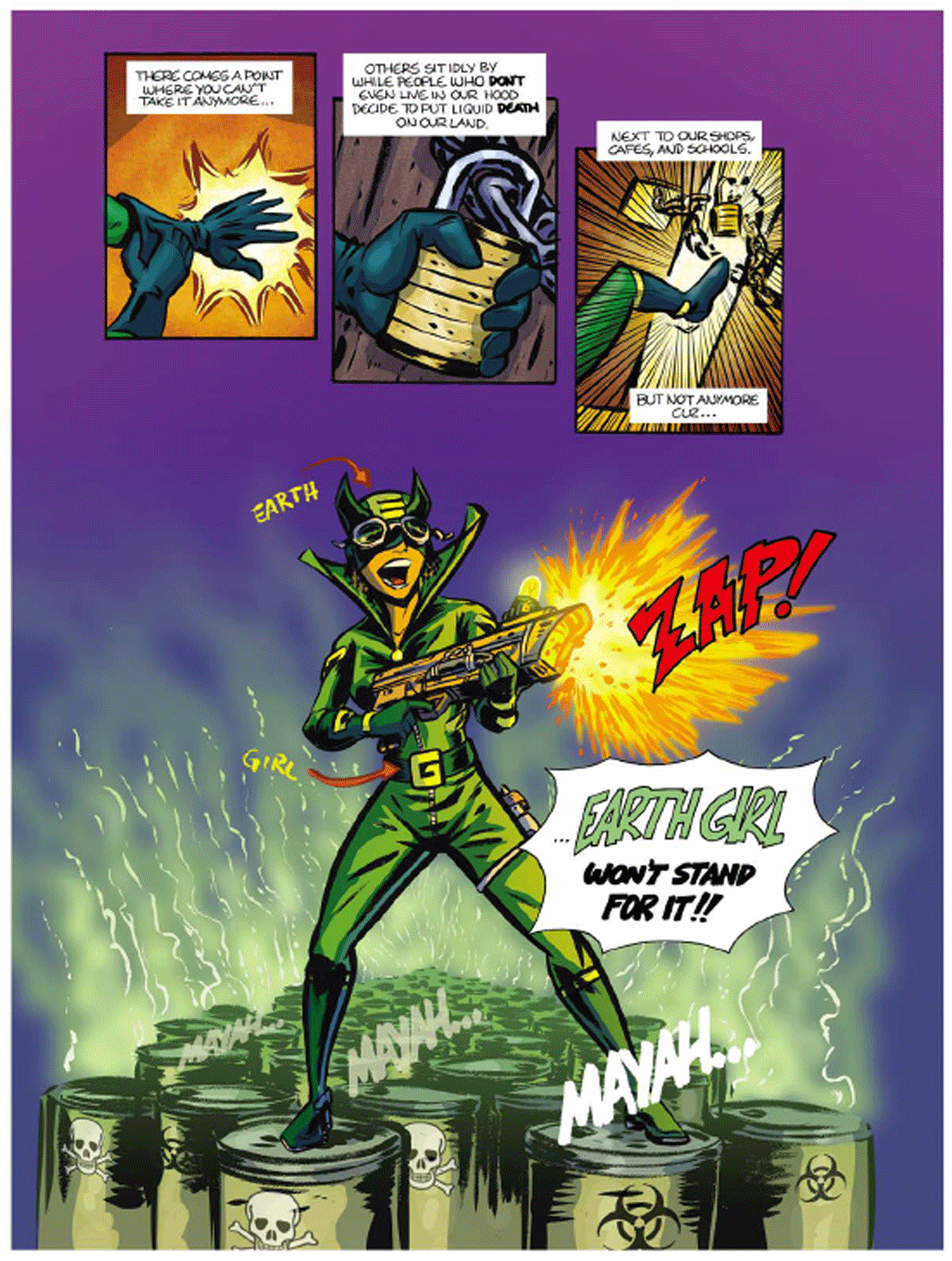In the last two decades, well-documented disasters such as the Flint water crisis and Hurricane Katrina have highlighted the disproportionate and unfair impact of climate change and environmental issues on vulnerable populations (Adeola and Picou 2016; Agyeman et al. 2016; Versey 2021). Communities of color (Parris et al 2020), impoverished people (Cureton 2011; Willett 2015), Indigenous communities (Bray 2020; Paul and Caplins 2020), and residents of the Global South (Givens et al. 2019) frequently suffer the greatest harm from environmental problems and often lack the resources to effectively prepare for and recover from devastating crises like extreme weather events fueled by climate change. Frequently, marginalized communities also suffer from more insidious forms of environmental harm that do not always attract widespread media attention, such as air pollution and exposure to pesticides. Bryce Covert reports that “[r]ace is the most significant predictor of a person living near contaminated air, water, or soil,” and the Environmental Protection Agency has denied 95 percent of claims that communities of color have brought against polluters (Covert 2016). As a result, it is important to educate young people—particularly those from vulnerable communities—about environmental injustices and empower them to participate in social justice-oriented community activism. However, environmental children’s media has largely failed to prepare readers to confront these pressing issues. As Clare Echterling contends, green children’s texts “overwhelmingly choose to avoid discussing the relationships between environmental issues and social inequalities, corporate/industrial culpability, and the necessity of far stricter government regulation” (Echterling 2016: 290). For instance, Rachel Hope Allison’s graphic novel I’m Not a Plastic Bag (2012) explores the horrifying slow violence that plastic pollution inflicts on marine animals, but the narrative and its paratexts elide the humanmade, capitalist systems that create this waste and do not address the unequal impact of marine debris on residents of the Global South. Likewise, Michelle Lord and Julia Blattman’s picture book The Mess That We Made (2020) examines the effects of marine pollution, but it does not acknowledge that “we” do not all contribute equally to the production of waste, with industrialized countries like China and the United States producing far more trash than other nations.
However, several comics published in the last decade counter these troubling silences by using the visual-verbal medium to educate children about environmental injustice. For example, Claudia Dávila’s Luz Makes a Splash (2012) teaches readers about water conservation in urban communities, while K. O’Neill’s Aquicorn Cove (2018) centers on the harm that socioeconomic inequalities inflict on the ocean. Significantly, these comics frequently feature empowered young female protagonists who promote environmental justice within their communities. The texts promote an ecofeminist approach to injustices by, as Alice Curry writes, “advocat[ing] a politics of resistance to neoliberal individualism and open[ing] up possibilities for alternative ecofeminist ethics predicated on values of community and mutuality” (Curry 2013: 77). Charlie LaGreca and Rebecca Bratspies’ Mayah’s Lot (2012) serves as a particularly provocative text to emerge from this ecofeminist comics trend. Published by the CUNY Center for Environmental Reform, the comic resulted from an intergenerational collaboration between the adult co-creators and a class of middle schoolers at the Mamie Fay School in New York City, which primarily serves gifted students of color. The narrative centers on Mayah, a young black girl who discovers that a sinister corporation plans to transform a vacant lot in her urban neighborhood into a toxic waste storage facility. LaGreca and Bratspies workshopped a draft of the comic with the initial class of students, who provided feedback that led to character redesigns and the insertion of a daydream sequence. Moreover, the adult creators have also used the published comic to conduct pedagogical workshops with other children. For instance, a book chapter published by Bratspies in The Media Method: Teaching Law with Popular Culture (2019) describes a series of workshops centered on Mayah’s Lot that she and LaGreca led with other children at the Mamie Fay School, which concluded with the students producing their own comics featuring a villain who personifies an environmental justice challenge in their own lives. Mayah’s Lot uses the interplay between the visual and verbal narrative tracks, along with the youth collaborators’ input, to highlight the links between environmental crises, socioeconomic inequities, and racism. Thus, Mayah’s Lot serves as a useful case study to examine how comics can serve as accessible eco-pedagogical tools that educate youth about environmental justice, empower them to engage in activism, and enable them to create powerful literatures of resistance in the face of daunting systemic issues.
The opening scene of Mayah’s Lot immediately calls the reader’s attention to the intersection of racial inequities and environmental issues. The title page depicts Mayah clambering over a graffiti-covered fence surrounding a vacant lot to tend the garden she has secretly planted there (Figure 1). A small caption in the upper left corner identifies the setting as Forestville, New York, but no trees or woodland creatures appear in the illustration. Instead, the page brims with visual indications of pollution: discarded trash fills the barren lot, litter covers the pavement, a toxic-looking liquid spills down a drain, and a passing truck spews black smoke. In the upper right corner, Mayah’s small garden stands out as the only glimpse of nature amid the desolate urban setting. Her creation of this green space in the vacant lot serves as an act of “guerrilla gardening,” which Richard Reynolds defines as “the illicit cultivation of someone else’s land” in order to “battle against scarcity of land, environmental abuse and wasted opportunities” (Reynolds 2009: 5). By transforming the polluted private land into a pocket of nature, Mayah participates in radical youth environmental activism. However, a white police officer soon disrupts her unsanctioned cultivation of the lot. Towering over the girl, he asks, “What’s a kid like you doing in here?” The next panel centers on his hand as he brandishes the fence padlock, saying, “This lock ain’t for show’n’tell. I oughta take you in” (Figure 2; LaGreca and Bratspies 2012: 5). These panels visually highlight the two characters’ unequal power dynamics as the white officer threatens to disproportionately punish the black “kid” for guerilla gardening. Moreover, the upheld padlock evokes the larger carceral system and the racial disparities perpetuated by mass incarceration. Mayah narrowly escapes punishment when Troop, a disabled black community organizer, distracts the police officer. However, this troubling confrontation underscores the systemic links between policing and environmental and racial injustices.
Tensions between the comic’s verbal and visual narratives also teach children about the ways that corporations perpetuate environmental injustice. A banner hung on the fence declares the lot as “the future home of Green Solutions” (LaGreca and Bratspies 2012: 5). Recycling symbols replace both “O”s in the word “Solutions.” Together, these images and the word “Green” in the corporation’s name suggest that the company plans to revitalize the vacant lot into a new, environmentally friendly business. When Mayah returns to the property, however, she discovers that the company has paved over her small garden with cement and surrounded it with toxic waste signs. She also finds a blueprint that reveals Green Solution’s true intentions for the vacant lot: the corporation intends to transform the property “into a waste dump and store toxic poisons there!” (emphasis in original) (LaGreca and Bratspies 2012: 9). The stark juxtaposition of the seemingly pro-environmental sign with the troubling illustrations of the destruction concealed behind the fence provides young readers with a vivid example of “greenwashing,” a phenomenon that occurs when corporations make “deliberate attempts to communicate positive environmental information not matched by improved environmental impacts” (Bowen 2014: 3). The comic visually highlights the deceptiveness of this marketing technique and, by extension, tacitly invites young readers to consider real-life environmentally-oriented corporate campaigns with skepticism.
The use of different fonts further attunes children to the ways that corporations use greenwashing perpetuate environmental injustices. After Mayah discovers the company’s plans, Green Solutions sends a representative, Lulu—a white businesswoman whose name stands as an acronym for the environmental justice term “locally undesirable land use”—to a permit hearing to seek approval for the waste facility (LaGreca 2012: backmatter). In dense speech bubbles filled with bolded and italicized words, Lulu tells the assembled neighborhood residents, “Green Solutions is offering Forestville an exciting redevelopment initiative. It’ll bring much-needed investment and will revitalize a blighted, vacant lot. We take tremendous pride in our ability to generate jobs in our partner communities while protecting the character of the neighborhoods we join” (Figure 3) (LaGreca and Bratspies 2012:14). Of course, the corporation has no intention of protecting or improving Forestville; instead, a preceding scene at the company headquarters reveals that its executives have selected the city based on its “demographics,” or large population of impoverished renters who they believe won’t fight the facility (LaGreca and Bratspies 2012: 13). The comic uses different font weights to spotlight the corporation’s deceptive language, bolding false terms like “redevelopment” and “partner” and italicizing ambiguous buzzwords such as “revitalize” and “character.” These visual cues train young readers to scrutinize Lulu’s empty promises with a critical eye and provide tangible examples of misleading language that real corporations may use to deceive consumers.
Though many of the Forestville residents react to Green Solutions’ proposed plans with disinterest or resignation, Mayah immediately recognizes the dangers posed by the planned waste facility. She fantasizes about transforming into Earth Girl, an environmental superhero. A splash page depicts the costumed girl brandishing a laser-shooting gun as she stands atop barrels of toxic waste that emanate green chemicals. Three small panels at the top of the page contain her internal monologue: “There comes a point where you can’t take it anymore… Others sit idly by while people who don’t even live in our hood decide to put liquid death on our land. Next to our shops, cafes, and schools. But not anymore cuz… Earth Girl won’t stand for it!!” (emphasis in original) (Figure 4) (LaGreca and Bratspies 2012: 10). Significantly, this sequence depicts Mayah smashing the same padlock wielded earlier by the police officer, a defiant act of resistance against an unequal system that fails to protect both black youth and the environment. Bratspies attributes this scene to the comic’s middle school collaborators, writing, “Based on student advice, we also added a daydream sequence to the middle of the book in which Mayah imagines herself as EarthGirl. The students thought the story dragged at that point and suggested that we add some laser guns to liven it up” (Bratspies 2019: 512). By encouraging the adult creators to re-envision Mayah as the heroic Earth Girl, the youth collaborators remix the heavily corporatized—and primarily white—icon of the superhero into a subversive figure who opposes anti-environmentalism, corporate greed, and police discrimination. However, Mayah’s superpowered fantasy also highlights intergenerational power disparities as the girl assumes the role of a heroic ecofeminist warrior who must battle against adult-created environmental issues, just as real-life youth activists like Greta Thunberg have led efforts to combat climate justice in the face of adult inaction. While the youth collaborators’ re-envisioning of Mayah as an armed superhero suggests that they view this advocacy as empowering, the Earth Girl fantasy also highlights the unfair burden that older generations have placed on all youth.
Following the superhero interlude, Mayah collaborates with Troop to rally community members of all ages to fight Green Solutions. A five-panel montage portrays Forestville residents raising public awareness of the toxic waste facility, monitoring air pollution near the vacant lot, and researching the company’s safety records (Figure 5) (LaGreca and Bratspies 2012: 15). The sequence educates readers about practical forms of local activism that they could plausibly undertake in their own communities, while the visual narrative counters mainstream depictions of environmental activists as middle class and white by portraying predominately black people participants. At the final council meeting, Mayah and the other activists reveal the results of their research in a last-ditch attempt to prevent the construction of the waste facility. For instance, Troop tells the council, “According to EPA.gov, we’re not in compliance for ozone, sulphur oxides, and particulate matter. This facility will make our air quality even worse!” (emphasis in original) (LaGreca and Bratspies 2012: 16). Troop’s oxygen nasal cannula features prominently in this panel. Though the comic never identifies the reason why he requires an oxygen tank, his comment implies that the existing air pollution in Forestville has contributed to his disability. This dialogue educates young readers about the grim consequences of pollution, as well as identifies accessible resources that the audience could use to research air quality rates in their own communities. Together, then, the activism montage and the council scene provide children with tangible avenues to learn about and confront environmental injustices.
The comic concludes with Mayah and the other activists successfully blocking the waste facility. In its place, the Forestville residents work together to transform the vacant lot into a vibrant public park. The comic’s final page depicts the lush green space filled with plants and community members instead of trash and police officers. This upbeat ending demonstrates that marginalized communities can achieve environmental justice if they work together to oppose harmful corporations. Of course, in reality, attempts to oppose LULUs do not always succeed, and corporations often have many more resources than impoverished people and people of color. However, by depicting effective youth environmental activism and teaching readers about the systems of power contributing to injustices, Mayah’s Lot does empower children to advocate for their communities. Additionally, by incorporating the input of middle school collaborators, the comic demonstrates how creators can amplify youth voices and produce more inclusive media that features youth of color in heroic roles. Ultimately, then, Mayah’s Lot indicates that comics can serve as a productive medium for educating young readers about pressing environmental issues and helping them develop the agency needed to confront these problems.
Author’s Note
Every effort has been made to trace copyright holders and to obtain their permission for the use of copyright material under educational fair use/dealing for the purpose and criticism and review and full attribution and copyright information has been provided in the captions.
Editorial Note
This article is part of the Rapid Responses: Comics in and of The Moment Special Collection, edited by Jeanette D’Arcy and Kay Sohini, with Ernesto Priego and Peter Wilkins.
Competing Interests
The author has no competing interests to declare.
References
Adeola, F. O. and Picou J. S. (2016) ‘Hurricane Katrina-linked Environmental Injustice: Race, Class, and Place Differentials in Attitudes’. Disasters 41(2): 228–257. DOI: http://doi.org/10.1111/disa.12204
Agyeman, J, Scholsberg, D, Craven, L. and Matthews, C. (2016) ‘Trends and Directions in Environmental Justice: From Inequity to Everyday Life, Community, and Just Sustainabilities’. Annual Review of Environment and Resources 41(1): 321–340. DOI: http://doi.org/10.1146/annurev-environ-110615-090052
Allison, R. (2012) I’m Not a Plastic Bag. Los Angeles: Archaia.
Bowen, F. (2014) After Greenwashing: Symbolic Corporate Environmentalism and Society. Cambridge: Cambridge University Press. DOI: http://doi.org/10.1017/CBO9781139541213
Bratspies, B. (2019) ‘Mayah’s Lot: Teaching Environmental Justice with Comic Books’. In: C. Corcos, ed. 2019. The Media Method: Teaching Law with Popular Culture. Durham: Academic Press, pp. 505–523.
Bray, L. A. (2020) ‘Settler Colonialism and Rural Environmental Injustice: Water Inequality on the Navajo Nation’. Rural Sociology 86(3): 586–610. DOI: http://doi.org/10.1111/ruso.12366
Covert, B. (2016) ‘Race Best Predicts Whether You Live Near Pollution’. The Nation, 18 February. Available at https://www.thenation.com/article/archive/race-best-predicts-whether-you-live-near-pollution/. [Last accessed 24 July 2021].
Cureton, S. (2011) ‘Environmental Victims: Environmental Injustice Issues that Threaten the Health of Children Living in Poverty’. Reviews on Environmental Health 26(3): 141–147. DOI: http://doi.org/10.1515/reveh.2011.021
Curry, Alice. (2013) Environmental Crisis in Young Adult Fiction: A Poetics of Earth. New York: Palgrave Macmillan. DOI: http://doi.org/10.1057/9781137270115
Dávila, C. (2012) Luz Makes a Splash. Toronto: Kids Can Press.
Echterling, C. (2016) ‘How to Save the World and Other Lessons from Children’s Environmental Literature’. Children’s Literature in Education 47(4): 283–299. DOI: http://doi.org/10.1007/s10583-016-9290-6
Givens, J. E., Huang, X, Jorgenson, A. K. (2019) ‘Ecologically Unequal Exchange: A Theory of Global Environmental Injustice’. Sociology Compass 13(5). DOI: http://doi.org/10.1111/soc4.12693
LaGreca, C. and Bratspies, R. (2012) Mayah’s Lot. New York: Center for Urban Environmental Reform.
Lord, Michelle. and Julia, Blattman. (2020) The Mess That We Made. Brooklyn: Flashlight Press.
O’Neill, K. (2018) Aquicorn Cove. Portland: Oni Press.
Parris, C L Hegtvedt, K A and Johnson C (2020) ‘Assessments of Environmental Injustice among Black Americans’. Social Currents 8(1): 45–63. DOI: http://doi.org/10.1177/2329496520950808
Paul, K. L. and Caplins, L. B. (2020) ‘Narratives of Injustice: An Investigation of Toxic Dumping within the Blackfeet Nation’. Human Biology 92(1): 27–35. DOI: http://doi.org/10.13110/humanbiology.92.1.04
Reynolds, R. (2009) On Guerrilla Gardening: A Handbook for Gardening without Boundaries. New York: Bloomsbury Paperbacks.
Versey, S. H. (2021) ‘Missing Pieces in the Discussion on Climate Change and Risk: Intersectionality and Compounded Vulnerability’. Policy Insights from the Behavioral and Brain Sciences 8(1): 67–75. DOI: http://doi.org/10.1177/2372732220982628
Willet, J. L. (2015) ‘Exploring the Intersection of Environmental Degradation and Poverty: Environmental Injustice in Nairobi, Kenya’. Social Work Education 34(5): 558–572. DOI: http://doi.org/10.1080/02615479.2015.1066326





